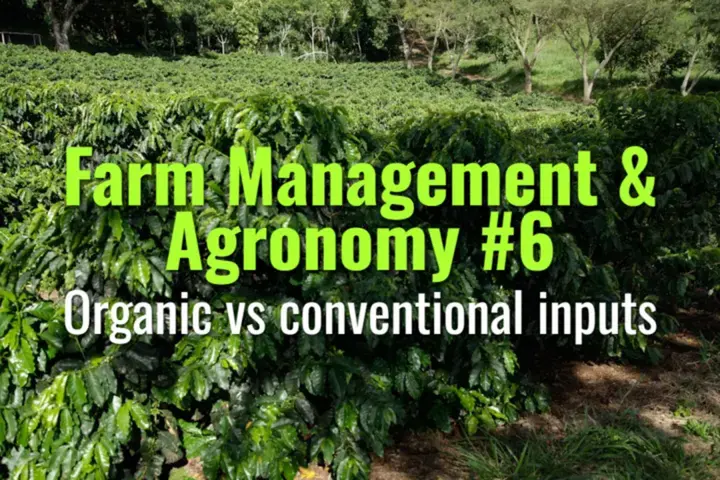Organic vs conventional inputs
This topic compares organic and conventional farming inputs in coffee production, examining their benefits, limitations, and roles in sustainability and cup quality.
- Coffee Basics Nerds
- 2 min read
Article 6 of 12 in Farm Management & Agronomy/

Conventional Inputs
- Definition: Synthetic fertilizers, herbicides, pesticides, and fungicides used to maximize productivity.
- Advantages:
- Rapid nutrient supply and higher immediate yields.
- Effective pest and disease control.
- Lower labor requirements compared to organic methods.
- Disadvantages:
- Long-term soil degradation and reduced biodiversity.
- Risk of chemical residues and environmental pollution.
- Higher dependence on external inputs and market price volatility.
Organic Inputs
- Definition: Natural materials such as compost, manure, coffee pulp, biofertilizers, botanical pesticides, and biological control agents.
- Advantages:
- Improve soil structure, organic matter, and microbial activity.
- Enhance long-term fertility and sustainability.
- Favor biodiversity and reduce chemical exposure risks.
- Market premiums for certified organic coffee.
- Disadvantages:
- Nutrient release is slower and less predictable.
- Often lower yields compared to conventional systems.
- Higher labor requirements (composting, manual weeding, pest management).
Comparative Impact on Coffee Quality
- Conventional systems: Emphasize yield, but improper chemical use can harm cup quality.
- Organic systems: Often linked with improved flavor complexity due to slower growth and healthier soil ecosystems.
Integrated Approaches
- Many farms adopt Integrated Nutrient Management (INM) and Integrated Pest Management (IPM):
- Blend of organic matter and targeted synthetic inputs.
- Balances productivity with sustainability.
Certification Considerations
- Organic certification requires compliance with standards (no synthetic agrochemicals, use of approved organic inputs).
- Certified coffee often earns premium prices but demands rigorous documentation and audits.
Climate and Market Relevance
- Climate change increases pest/disease pressures, challenging organic-only systems.
- Consumer demand for sustainable, traceable coffee is rising, supporting organic adoption.
Lasting Importance
The choice between organic and conventional inputs shapes the economic, environmental, and sensory outcomes of coffee farming. While conventional inputs drive yields, organic practices sustain soils and ecosystems. The future lies in integrated, context-specific strategies that balance productivity, resilience, and quality.